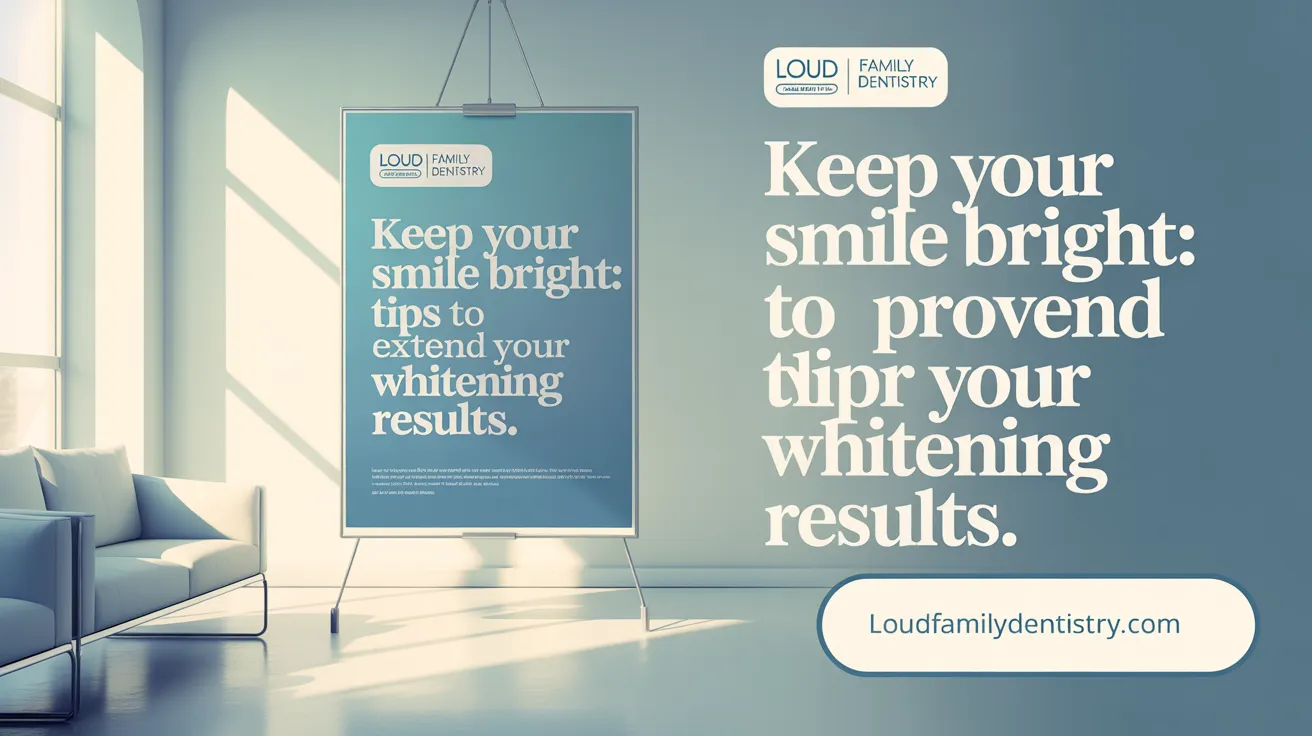Introduction to Teeth Whitening
Teeth whitening has become an increasingly popular cosmetic dental procedure aimed at enhancing the brightness and overall appearance of your smile. With a variety of available methods and safety considerations, it is essential to understand the procedures, expected outcomes, and maintenance involved before beginning treatment. This article provides a comprehensive overview of teeth whitening to help you make an informed decision and achieve the best results safely.
Overview of Teeth Whitening Procedures and Options

What are the different teeth whitening procedures available?
There are several options for whitening teeth, ranging from simple over-the-counter products to professional treatments administered by dentists. OTC options include whitening toothpaste, strips, mouthwashes, gels, and charcoal-based toothpastes, which generally provide mild results over extended use. These are convenient but limited in their ability to substantially brighten teeth.
Professional in-office treatments, like Zoom! laser whitening, use high-concentration hydrogen peroxide gels combined with special light activation to deliver quick and impressive results. A typical session lasts around two hours and can whiten teeth up to eight shades brighter, often lasting for about a year and a half.
For those preferring at-home options with professional guidance, custom-fitted trays filled with peroxide gels are popular. These allow gradual whitening over a few weeks, offering a safer and more controlled whitening process. Additionally, some patients opt for whitening pens, which are portable and easy to use, although their effectiveness varies.
Besides bleaching, cosmetic options like porcelain veneers or crowns are available for more stubborn stains and intrinsic discoloration. These treatments cover the teeth entirely and can provide a long-lasting, stain-resistant cosmetic solution.
How do different whitening options compare in terms of effectiveness and safety?
The effectiveness of whitening options varies significantly. In-office treatments are the most effective, capable of transforming teeth in just one visit by lightening up to eight shades. They use strong peroxide solutions and often incorporate light activation, which accelerates the bleaching process.
At-home kits, especially those fitted with custom trays, offer a middle ground. They are generally safe when used under professional supervision and provide gradual results. The peroxide concentration is lower than in-office products, reducing risks such as sensitivity or gum irritation.
Over-the-counter products like whitening strips or pens are safe if used correctly but can sometimes cause temporary tooth sensitivity or gum irritation, especially if overused. These products are less potent and typically take longer to show visible differences.
Natural alternatives are gentler and more suitable for sensitive teeth, but they tend to be less effective at achieving significant whitening.
To minimize risks, it’s crucial to consult with a dental professional before starting any whitening treatment. A dentist can ensure your teeth and gums are healthy and help you select the most appropriate method, balancing safety and whitening goals.
| Treatment Type | Effectiveness | Safety | Cost Range | Duration | Notes |
|---|---|---|---|---|---|
| In-office whitening | Up to 8 shades in 1 session | Very safe when supervised | £200-£1000+ | 1-2 hours | Fastest results, more expensive |
| Custom tray at-home kits | Several shades gradually | Safe with professional oversight | £100-£300 | 1-2 weeks | Good control, prolonged results |
| OTC strips/pen | Mild to moderate | Safe when used as directed | £20-£50 | Several weeks | Best for minor stains |
| Natural remedies | Mild effects | Very safe | Varies | Varies | Less effective, for sensitive teeth |
| Veneers/Crowns | Long-lasting | Safe, but invasive | £500-£2000 per tooth | Permanent | For intrinsic and stubborn stains |
Choosing the right whitening option depends on your specific needs, dental health, and budget. Always seek professional advice to ensure safe and effective results.
Safety Considerations and Potential Risks of Teeth Whitening
What are the risks and safety considerations of teeth whitening?
Teeth whitening is generally safe when performed properly, but it does involve some risks. Common concerns include tooth sensitivity, gum irritation, and potential damage to the enamel if the procedure is overdone or not correctly applied. Sensitivity can range from mild to severe and usually diminishes after a few days. However, aggressive or frequent bleaching can weaken enamel over time, leading to increased discomfort and higher susceptibility to cavities.
Gum irritation may occur if the bleaching gel comes into direct contact with the soft tissues, especially when trays do not fit properly. To minimize these risks, it’s important to use custom-fitted trays and follow professionally guided instructions. Consulting with a licensed dental practitioner before starting whitening treatments ensures your teeth and gums are healthy enough for the process and that underlying issues like cavities or gum disease are treated beforehand.
Using proven products under professional supervision greatly enhances safety. Proper application, adherence to instructions, and avoiding excessive use help prevent long-term damage. Overall, teeth whitening is safe when performed under controlled conditions and with reputable products, but self-administered over-the-counter kits carry higher risks if misused.
Step-by-Step Breakdown of Professional Whitening Treatments

What are the typical steps involved in a professional teeth whitening procedure?
A professional whitening session begins with an initial dental exam to ensure your teeth and gums are healthy. The dentist may perform a cleaning to remove plaque and tartar, allowing the whitening agents to work more effectively.
Next, the current shade of your teeth is recorded, often using a shade guide for comparison during and after treatment.
The dentist then applies a protective barrier, such as gauze and a gingival barrier, around your teeth to shield your gums from the bleaching gel. This step is crucial to prevent gum irritation.
The whitening gel, containing hydrogen peroxide or carbamide peroxide, is carefully applied to your teeth. To activate the bleaching process, a special light or laser may be used, which helps accelerate the chemical reaction.
Each application lasts about 10 to 15 minutes, and the process may be repeated multiple times during the session, typically lasting between 30 to 60 minutes overall.
Once the desired shade is achieved, the gel is rinsed off. Some clinics may apply a fluoride treatment afterward to reduce tooth sensitivity and reinforce enamel.
For continued results, the dentist might recommend at-home whitening kits or follow-up treatments, such as additional in-office sessions.
What should a patient expect before, during and after teeth whitening?
Before the procedure, scheduling a dental checkup is advisable. Your dentist will assess whether your teeth are suitable for whitening and might suggest cleaning to remove surface stains, improving the outcome.
During the treatment, which usually takes about 90 minutes, protective barriers are placed to shield soft tissues. The whitening gel and light activation will be used as described, with minimal discomfort reported. Some patients may experience short-term sensitivity or gum irritation, which is typically manageable.
After the session, teeth may remain sensitive for a few days, and gums might be slightly irritated. These effects fade with time. To help maintain results, patients are advised to avoid stain-causing foods and drinks—like coffee, tea, and red wine—and refrain from smoking.
Good oral hygiene practices and periodic touch-up treatments can help prolong the whitening effects, which generally last between six months and two years depending on lifestyle and oral care habits.
Preparing for Your Teeth Whitening Treatment
 To achieve the best results from teeth whitening, proper preparation is essential. Start by scheduling a dental check-up to ensure your teeth and gums are healthy. During this visit, your dentist may perform a professional cleaning to remove plaque and tartar, allowing the whitening agents to penetrate the enamel more effectively.
To achieve the best results from teeth whitening, proper preparation is essential. Start by scheduling a dental check-up to ensure your teeth and gums are healthy. During this visit, your dentist may perform a professional cleaning to remove plaque and tartar, allowing the whitening agents to penetrate the enamel more effectively.
Maintaining good oral hygiene in the weeks leading up to the appointment is also important. Brush at least twice daily with a soft-bristled toothbrush and floss thoroughly to reduce surface stains and plaque buildup. Avoid consuming stain-causing foods and beverages such as coffee, tea, red wine, berries, and soy sauce prior to treatment.
On the day of your whitening session, it’s advisable to refrain from eating or drinking, especially acidic or pigmented items, to prevent staining and discomfort. If you must eat beforehand, opt for water and neutral foods. Using desensitizing or sensitive toothpaste in the days leading up to your appointment can help minimize tooth sensitivity.
It’s also important to allocate enough time for your appointment, which usually lasts around an hour. Following the treatment, avoid staining foods, drinks, hot or cold temperatures, and tobacco for at least 24 to 48 hours. Your dentist might provide additional tips tailored to your needs to help sustain and enhance your whitening results, ensuring you leave with a brighter, more confident smile.
Maintaining and Prolonging Teeth Whitening Results

What tips can help maintain and prolong teeth whitening results?
After undergoing a professional teeth whitening treatment, it’s essential to adopt a few habits to preserve that bright, clean appearance. First, be mindful of your diet; avoid or limit foods and drinks that cause staining, such as coffee, tea, red wine, dark sodas, berries, and chocolate. Rinsing the mouth with water after consuming these items helps reduce their impact on your teeth.
Tobacco use, including smoking and smokeless tobacco, can quickly stain teeth and damage enamel. Quitting or avoiding tobacco products is highly recommended to maintain whitening results.
Practicing good oral hygiene is crucial. Brushing twice daily with a whitening toothpaste, flossing daily, and scheduling regular dental checkups and professional cleanings help remove plaque and surface stains, keeping teeth looking their best.
For ongoing maintenance, consider using custom-fitted touch-up trays or professional-grade bleaching kits as advised by your dentist. These can be used periodically, often every three to six months, to keep teeth several shades brighter.
Additionally, limiting acidic and sugary foods that can erode enamel or promote stain buildup, avoiding dark-colored beverages immediately after whitening, and using a straw when drinking stain-causing drinks can help preserve your results.
By implementing these lifestyle adjustments, you can extend the longevity of your whitening treatment, keeping your smile vibrant and confident for years to come.
Latest Advances and Making the Right Whitening Choice

What are the latest research findings and advancements in teeth whitening?
Recent research in teeth whitening has yielded promising developments aimed at making procedures safer and more effective. Scientists are exploring lower concentrations of hydrogen peroxide coupled with alternative compounds like nano-hydroxyapatite and calcium phosphate. These support enamel health and help reduce sensitivity commonly associated with whitening.
Advances in technology have significantly improved treatment outcomes. Laser and LED light activation are now common, speeding up the bleaching process during professional treatments and minimizing discomfort. Nanotechnology is emerging as a particularly exciting area, allowing whitening agents to penetrate the enamel at the molecular level for faster, longer-lasting results with less sensitivity.
Furthermore, there is a growing focus on natural and non-invasive solutions, including natural ingredients and light-activated gels that offer safer options for patients seeking aesthetic improvements.
Looking ahead, future innovations may incorporate personalized treatments based on genetic testing, helping to optimize whitening efficacy while minimizing potential side effects. Throughout all advances, the priority remains on preserving enamel integrity and ensuring patient safety.
Final Thoughts on Teeth Whitening
Teeth whitening is a powerful and popular cosmetic treatment that can dramatically enhance your smile and boost confidence when done correctly. Understanding the available procedures, safety considerations, and preparation steps ensures you choose the best option tailored to your oral health and cosmetic goals. While professional treatments offer faster and more noticeable results, maintaining good dental hygiene and following recommended care practices are essential to prolonging your bright smile. Advancements in whitening technology continue to improve safety and effectiveness, making professional consultation invaluable. Armed with the right information and realistic expectations, you can embark on your teeth whitening journey with confidence and achieve lasting, beautiful results.
References
- What to Know Before Your Teeth Whitening Appointment
- Teeth Whitening 101: Must-Know Tips Before Starting
- Nine things you really need to know about tooth whitening
- Teeth Whitening - General and Cosmetic Dentist
- Things to Do Before You Have Your Teeth Whitened
- Risks of Teeth Whitening: What You Need to Know Before ...
- What to Do Before Teeth Whitening Treatment
- Tooth Whitening: What We Now Know - PMC
- What to Know Before Your Teeth Whitening Appointment
- What to Do Before a Teeth Whitening Treatment
